What would the consumed fuel look like if the space rocket fuel tank were transparent?

The launch of a space rocket that flies to space and transports cargo and personnel requires a huge amount of fuel to carry the fuselage and luggage into outer space against gravity. A movie that clearly shows what the fuel consumed at launch looks like by making the four types of space rocket fuselage 'transparent' is released on YouTube.
The movie begins with four rockets lined up at the spaceship launch site at the Kennedy Space Center . The type of rocket is the disposable liquid fuel multi-stage rocket `` Saturn V '' used in the Apollo program from 1967 to 1973 from the left, NASA's manned spacecraft launched 135 times from 1981 to 2011. space shuttle ', deals with the space transportation business space X ' of large rocket that is launched from the 2018 Falcon Heavy 'rocket launch NASA is being developed as a successor to the space shuttle' space launch system is '.
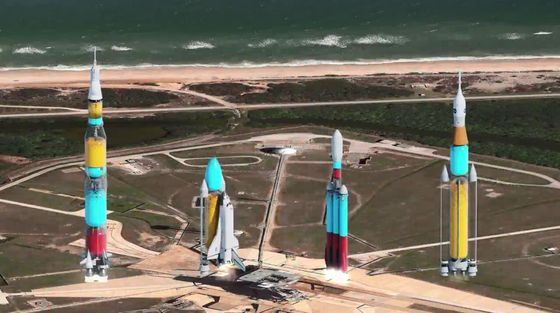
Below is the actual Saturn V

by
space shuttle

by
Falcon heavy

by Daniel Oberhaus
Space launch system. The space launch system has never been launched, so the image below is an imaginary figure.

by
In the movie, the contents of the fuel tank are color-coded by type. The red color is kerosene- based rocket fuel, which is widely used in the United States, ' RP-1 '. Orange is ' liquid hydrogen (LH2) ' used as a propellant for rocket engines, and light blue is ' liquid oxygen (LOX) ' used as an oxidizer for liquid hydrogen.
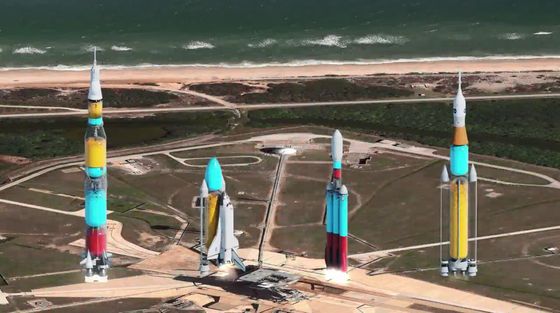
The Space Shuttle and Space Launch System that do not use RP-1 are equipped with two auxiliary rockets that use solid fuel in addition to liquid fuel. It is said that this is a booster to support the weight of the fuel tank which will become huge because the density of liquid hydrogen used by both machines is low.
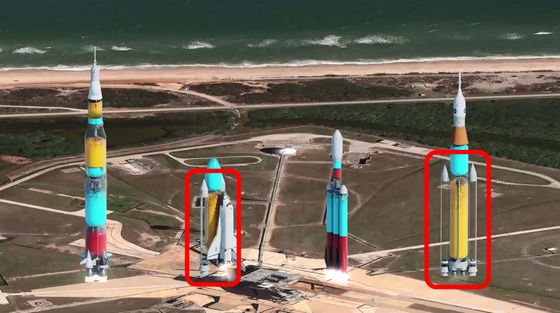
Counting starts, and 4 types of rockets fire at the same time. In the Space Shuttle and Space Launch System, not only was the auxiliary rocket vigorously ejecting flames, but the flames burning inside the booster were also reproduced.
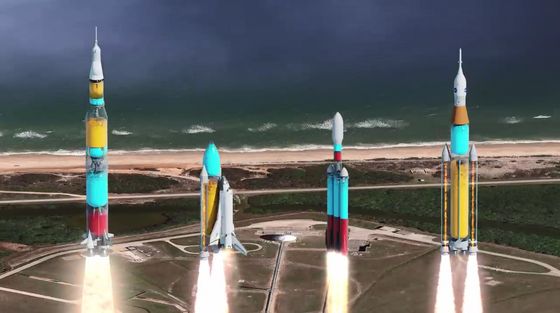
About two minutes after the launch, the Space Shuttle and the Space Launch System's auxiliary rocket were disconnected. The multi-stage rocket is designed to reduce the total weight by discarding used fuel tanks and modules so that excess fuel is not used.
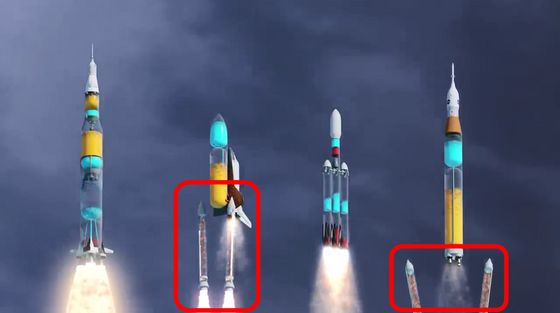
The main engines of the Space Shuttle and the Space Launch System, with the auxiliary rocket separated, mix and burn liquid hydrogen and liquid oxygen to produce a large amount of energy and water.

About 2 minutes and 30 seconds after the launch, Saturn V disconnected the first stage rocket and Falcon Heavy separated the auxiliary booster.
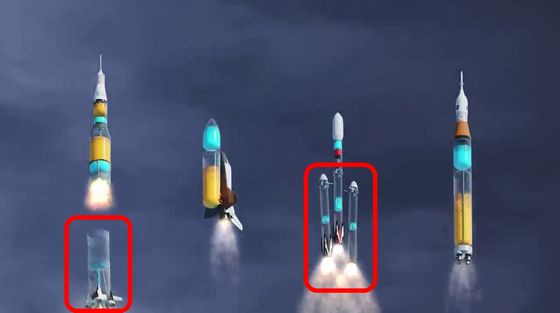
At the same time, the second stage rocket starts jetting and continues propulsion.
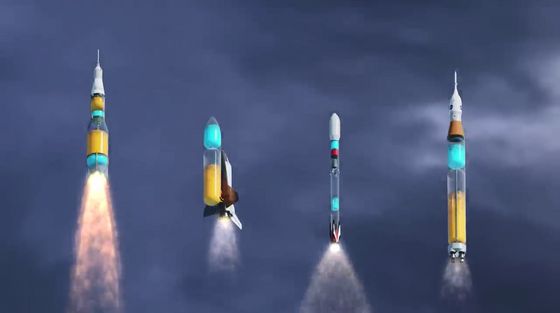
In Saturn V, about 30 seconds after the first stage rocket is disconnected, the connecting rings of the first and second stages are discarded.
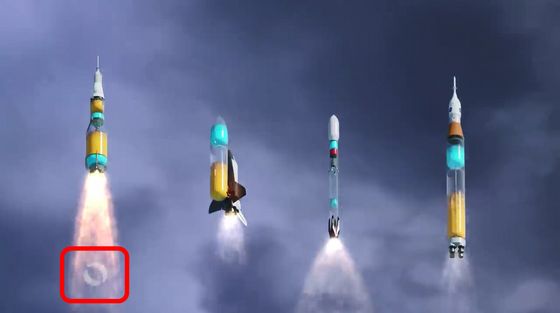
And more than three minutes after the launch, Falcon Heavy separated the first-stage rocket ...
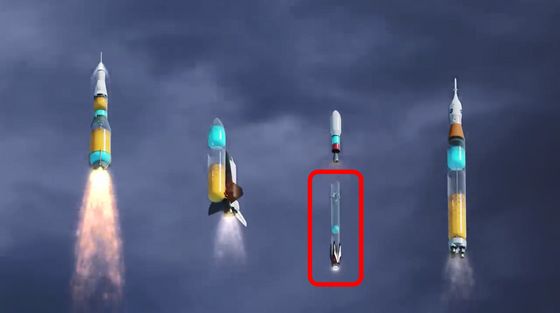
Saturn V has separated the
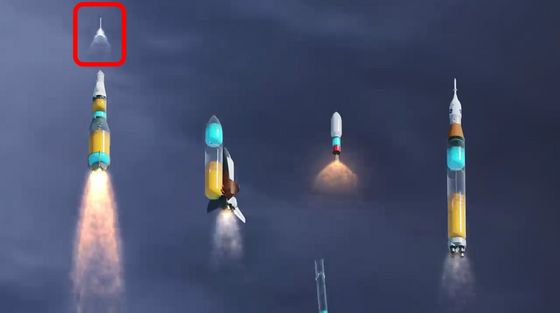
Both aircraft are much lighter than when they were launched.
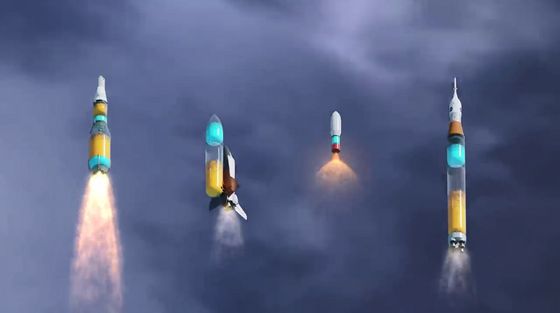
Eventually, the outer wall of the Falcon Heavy itself will come off ...
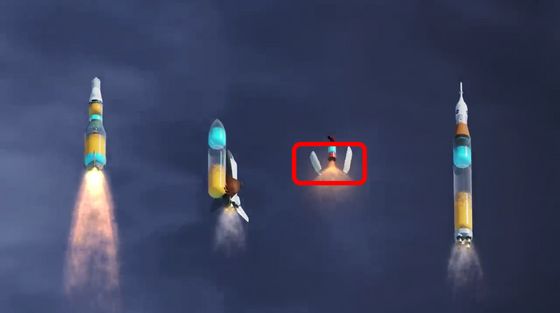
A red
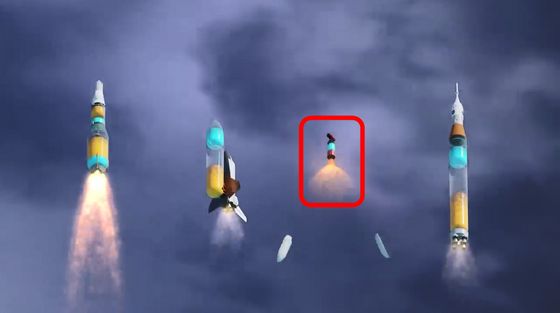
As the background becomes more cosmic, the contents of the fuel tank will gradually decrease.
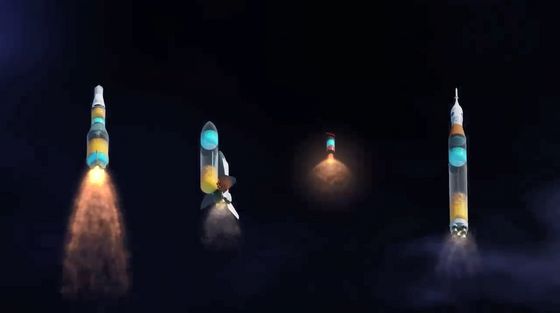
The burning of the Falcon Heavy has stopped despite the contents of the fuel tank remaining, which means that the second stage rocket of the Falcon Heavy can be stopped by the orbit and repeated ignition multiple times. There seems to be.
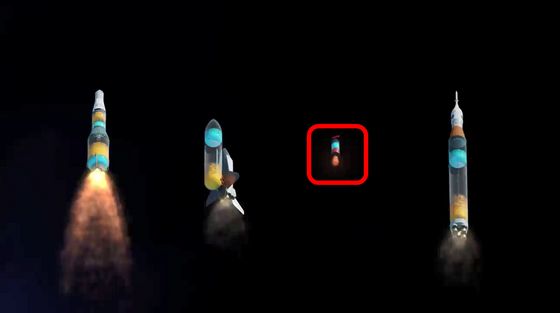
Finally, the engine combustion of the Space Shuttle and the Space Launch System is over.
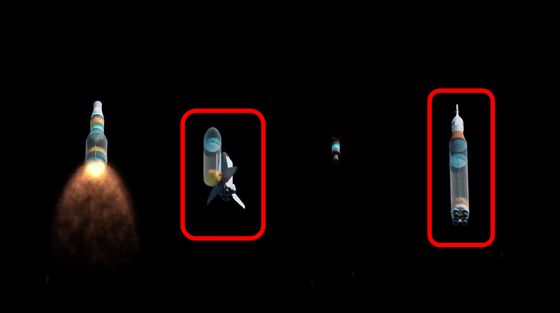
The space shuttle disconnects the fuel tank ...
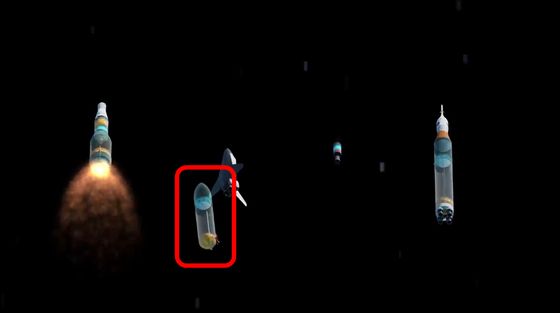
The Space Launch System also separated the second stage rocket.
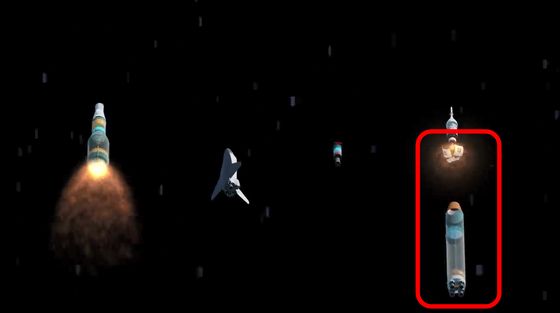
The escape module is also disconnected from the space launch system ...

In a very light state.

And Saturn V separated the second stage rocket.

In the process of launching, it was a movie that you can see at a glance how each rocket consumes the contents of a huge fuel tank and disconnects the extra module, making it extremely small and compact compared to when it was launched.

Related Posts:







